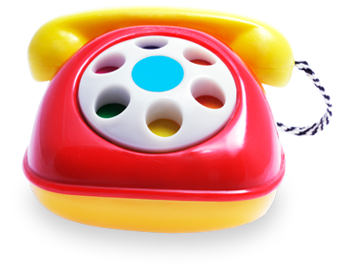About Congenital Hand Conditions
Most congenital hand differences are evident at birth and are diagnosed with a physical exam and X-rays. In most cases, the cause is unknown. The most common types of congenital hand conditions include the following:
- Polydactyly refers to one or more extra fingers or thumbs that may be abnormally shaped.
- Syndactyly refers to webbed or fused fingers or toes. These can impede finger growth and dexterity.
- Symbrachydactyly refers to missing fingers or thumbs or abnormally short digits.
- Radial dysplasia or club hand. This results from an underdeveloped radius bone in the forearm and often affects the thumb as well. This may be very subtle or one of the bones in the forearm or thumb may be missing.
Trigger Thumb
A trigger thumb refers to a thumb that can't straighten or that pops when bending and straightening. While it is not a congenital condition, it typically occurs shortly after birth or as your child grows.
Congenital Hand Conditions Treatments
Our pediatric hand specialists make treatment recommendations based on your child’s specific hand condition, anatomy, age, and stage of growth. We offer a full range of nonsurgical options as well as the latest hand surgeries and procedures. Our goals are to ensure your child can use their hands successfully so that they can live an independent, happy life.
Nonsurgical Treatments
In some cases, congenital hand conditions may benefit from bracing, casting, physical therapy, or occupational therapy.
Surgical Treatments
The type and extent of your child’s hand condition will determine if they will benefit from surgery. Our hand and wrist surgeons are skilled in the most advanced surgical techniques for building a new thumb or fingers, removing extra fingers, straightening the wrist, separating fingers, and more. Most surgeries are performed under general anesthesia on an outpatient basis, meaning your child may return home the same day as their surgery.
Treatment Timeline
Most congenital hand conditions seen in newborns do not require immediate care. Surgery – if it is needed – is typically performed when your child is 12 to 18 months old. After treatment, we follow your child as they grow to ensure their function improves and any difficulties that may develop are identified and treated.
A Team Approach to Treating Congenital Hand Conditions
We understand that a congenital hand condition can affect not just your child’s physical growth and development but also their mental well-being. We develop a personalized treatment plan for your child that takes these factors into account, and we work as a team to make the treatment process as smooth as possible for your whole family. Your child's care team may also include pediatric orthopaedic surgeons, plastic surgeons, pediatricians, anesthesiologists, neurologists, physical therapists, and many others.

